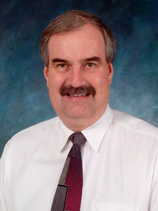 It is well known that there is a shortage of physicians serving rural communities in this country.
It is well known that there is a shortage of physicians serving rural communities in this country.
What Paul Paulman, M.D., wants to know is what makes family physicians currently practicing in rural areas successful?
The results of Dr. Paulman’s qualitative study into this question were recently published in the spring 2006 issue of The Journal of Rural Health.
“I had this hypothesis that rural doctors enjoy the outdoors or had outdoor hobbies that would attract them to practice in rural areas and that they were very independent,” Dr. Paulman said.
Dr. Paulman conducted the study with help from co-investigators Elisabeth Backer, M.D., Helen McIlvain, Ph.D., and Ryan Ramaekers, M.D., who interviewed the 11 rural physicians from across Nebraska. Dr. Ramaekers’ research and travel were supported by a grant from the UNMC College of Medicine dean’s office.
What they found was that all of the physicians shared some common characteristics:
- All but one of the physicians grew up in a rural setting.
- Most had a role model growing up, whether related or not, who also practiced medicine.
- They enjoyed the wide scope of their practice.
“We got rich information from these folks,” Dr. Paulman said. “We found out what they like to do, what they like about their practice, about the community, where they are from, and what influenced them growing up.”
Dr. Paulman said all of the physicians exhibited a pioneer spirit of independence.
“The 11 physicians defined themselves as independent-minded, relationship-driven, resourceful and trustworthy practitioners,” the journal article states.
The journal article goes on to say that earning a large income is not as important to these doctors as is providing service to the community. “These doctors were more service-oriented as opposed to science-oriented,” Dr. Paulman said.
All of the physicians had been in rural practice for an average of 16 years. The average age of the physician was 48 and the average size of the town they practiced in was 2,031 people.
“What we hope to do with the findings is to use them in the admissions process and identify those potential students who would be most likely to set up practice in a rural community,” Dr. Paulman said.